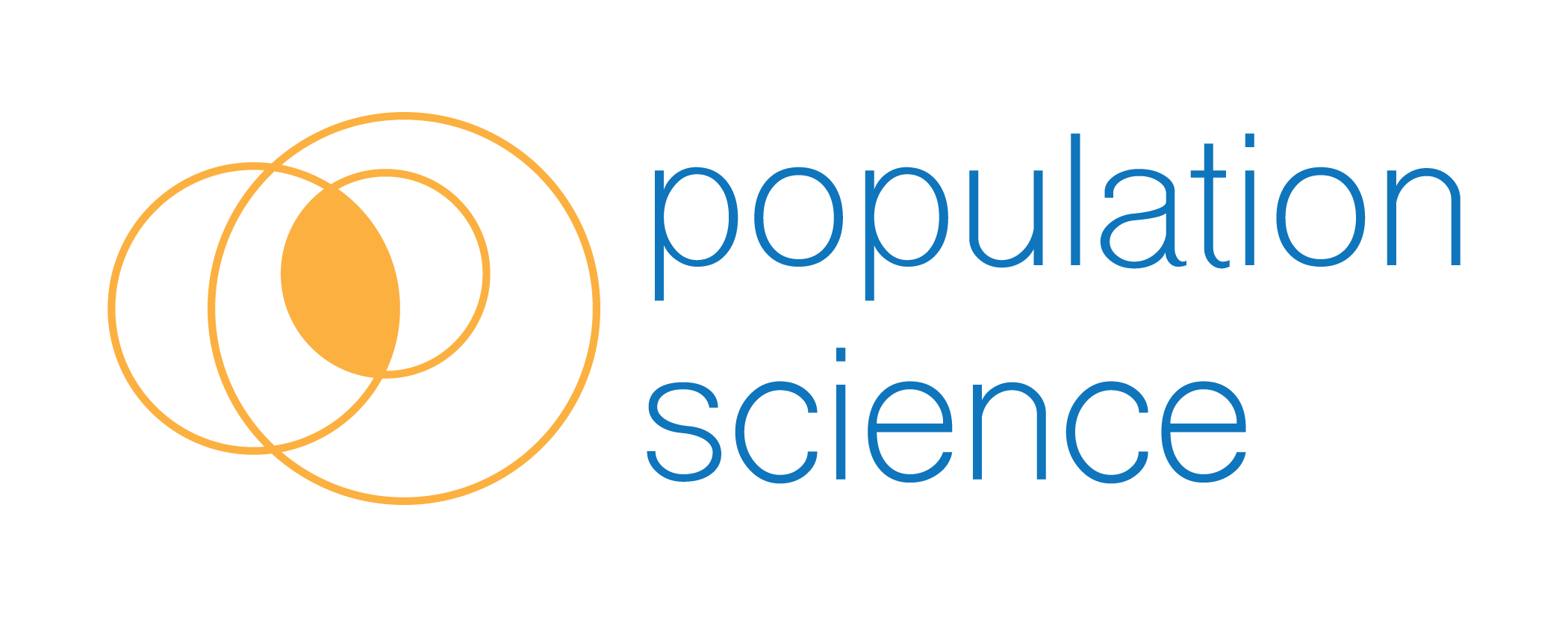
by Emily Barnes | Aug 24, 2022 | Digital Marketing
Most internal marketing organizations have a scale issue. It doesn’t matter if you’re a mom and pop or Fortune 500 brand. While the size and scope of your organization might be different, every company is facing three key issues:
Marketing has become highly technical and fragmented.
If you are a brand or agency you’re probably hit up several times a day from a new technology provider or advertising platform that will supposedly make your marketing more efficient, more effective, and/or improve your ROADs. Unfortunately, all of these platforms take resources to setup, manage, and use to their fullest potential.
The reality is just about every marketing department has a long list of platforms and none of them are setup and/or optimized to work efficiently. To make matters worse these platforms are rarely integrated. The technology we rely upon as marketers to make our lives easier is in many cases making our lives harder because it unintentionally is fragmenting our operations.
Difficulty hiring and retaining key talent.
This headline says it all here. Every industry seems to be facing a shortage of talent, but technical expertise is at a critical shortage. As marketing becomes more technical we find ourselves competing with other tech companies for talent. Finding people with experience on the platforms we rely on is hard enough and many organizations (especially SMBs) do not have the resources to hire an inexperienced employee and train them.
Challenges identifying, working with, and managing 3rd parties (agencies, consultants, and tech platforms).
Since it is difficult to hire and manage domain experts to service all aspects of a marketing tech stack most organizations look to outsource to agencies, consultants, or they allow their tech partner to manage their instance for them (for an additional fee). Unfortunately, the amount of experts you need is growing.
Advertising on just Google and Facebook/Instagram isn’t enough for most brands anymore. You need to be on TikTok, Snap, connected TV, streaming audio, native, and digital out-of-home. Add these unique channels to your CRM, CDP, email platform, SMS, content calendar…. (I’ll stop). It quickly becomes unmanageable to oversee best of breed 3rd parties to manage all of your platforms for you.
The end result of these issues is chaos and inefficiency. How can your organization take meaningful steps to address your scalability issues and make your marketing team more efficient?
Marketing Operations Leadership
A lot of marketing teams lack dedicated project management or operations managers who are dedicated to making sure everything runs like a well oiled machine. While it is difficult to hire anyone with specific domain/technical expertise it is easier to find good project/operations managers. You don’t even need a senior level hire for this role. Having someone on staff that is dedicated to the operations of your marketing department will pay major dividends. It will provide the flexibility you need to ensure your internal staff and 3rd party partners are in sync and operating efficiently saving significant time and money.
Balance 3rd party agencies/consultants between how much assistance they can provide to match your goals.
If you have marketing ops that can manage many 3rd parties then select best of breed, niche partners to service all of your needs from ad buying specific platforms like TikTok, to analytics/reporting, and more. If you’re a leaner marketing organization you need to identify your core needs and find partners that can provide support for multiple items. While domain experts are great, more often than not someone who has some experience across multiple disciplines can provide work that is good enough to significantly enhance your marketing efforts (basically you don’t always need someone with a ton of experience, the vast majority of orgs can get the job done with intermediate level expertise on most platforms).
Simplify your platform/tech stack.
This might sound similar to point #2, but this gets down to doing a good job of picking the right partner/platform. There are thousands of martech/adtech companies and I’m sure you have seen 10s if not 100s that could theoretically help your organization. I always challenge our clients to ask one of two questions:
Does this solution help us enough to take on the additional responsibilities to maximize the opportunity?
Does this advertising platform help us reach enough incremental new in-market consumers to take on managing it?
The bottom line is looking at the incrementality of a solution. Any time you add a solution to your stack it requires resources to manage and make it work properly. The new solution must provide a lot of value to justify adding resources to manage it.

by Emily Barnes | Aug 9, 2022 | Digital Marketing
While there is no “easy button” in marketing, here are two things you can kick off today that can give a boost to your digital marketing efforts.
Test A New Platform
The digital media landscape is changing. More people are spending time online across a more diverse range of content. Whether you want to diversify your paid, earned, or owned media there are several new platforms to try. The key here is to pick one platform, perfect it, and move on to another.
One mistake we see organizations routinely make is trying to be everywhere all at once. This creates a haphazard user experience and ultimately fails to resonate with your target audience. We strongly suggest getting really good at one platform first. Do not move on to another platform until you feel like you have maximized your knowledge of how to optimize it.
Organic Cross-Promotion
Find opportunities to plug all of your communications channels/social platforms so your audience knows where to find you. When you embed a video into email communication make sure it links to your YouTube page. If you are active on Tiktok use your video content generated on the platform on Instagram, Facebook, and YouTube. Invite followers on social media to join your email list. The options are endless!
The bottom line is that you remain consistent with your cross-promotion. Whether you used paid, earned, or owned tactics to acquire your audience, make sure they follow you on as many channels as possible. Organic reach is limited on every platform so the more opportunities you have to reach the same person with organic content the more likely they are to see it!

by Emily Barnes | Jul 29, 2022 | Digital Marketing
Let’s talk about building an online community… Since the dawn of the digital era building, a high-quality email list has been the foundation of any marketing strategy. Not only does the ROI from email beat every other channel, but the email address has also become the gold standard in cross-channel audience targeting. That said, competition for attention in the inbox is at all-time highs (and will continue to get harder).
It is time for marketers to take a more holistic approach to their audience engagement. Your audience spends a lot of time on multiple digital platforms consuming content in myriad ways. Here are some places you should build community:
TikTok
TikTok has found a niche to provide people an easy way to produce, share, and discover short form user-generated video content. TikTok also isn’t just for young kids anymore. The 28-50 demographic is rapidly growing. Like it or not, TikTok has made it easy for user-generated video content to go viral, opening up affordable opportunities for individuals, brands, and organizations of all types to get into video promotion.
In fact, we are seeing the adoption of user-generated video content from TikTok get applied to other video formats including Facebook, Instagram, YouTube, and even Connected TV. If you haven’t invested in a video strategy due to cost constraints now is the time to get in on the user-generated video content craze. All it takes is a little time and a cell phone to create a short video that connects with your target audience.
YouTube
YouTube reached a whopping 81% of the connected audience in the US every month. Usage is strong across every demographic and being within the Google ecosystem targeting is second to none. Using paid promotion to get key video messages in front of target audiences using an email list, contextual targeting, or even an affinity audience provided by Google is a scalable strategy for any marketing strategy.
Meta Platforms
Facebook and Instagram are dynamic duos that can be managed using Meta’s Business Manager. The tools available for managing and analyzing brand owners’ accounts are generally easy to use so even marketing beginners can pick up the basics. The combined reach of Facebook and Instagram across all demographics plus a wide variety of content types (video and static post types) gives you a lot of options to engage your audience.
Twitter
Twitter is an often forgotten social media platform, but it is a powerful tool to reach audiences looking to consume small snippets of content at a time. Many communities have emerged on the platform. You can pretty easily identify key influencers and topics that are pertinent to your organization with a keyword or hashtag search. organic content on the platform. It doesn’t take very much time and you will be surprised by who is out there listening. A few minutes per day on Twitter could unlock your next big customer/partnership/advocate or even make your organization go viral.
LinkedIn
LinkedIn is the place to be if you’re targeting business professionals. The reach and targeting options for ads are second to none in B2B. While it can be expensive to run targeted ads to boost your reach there are ways to get organic content amplified. Target partners, brand champions, or key allies on the platform and ask them to share your content with their connections. It is a tried and true method for driving awareness of your message.
When you have multiple touch points with your target audience you will increase your overall organic reach and ensure no important communication is missed. Be sure to follow Population Science for more content on how to build your omnichannel community online!

by Emily Barnes | Jul 21, 2022 | Industry News
Two major announcements shook the digital advertising market. First, Disney announced a new partnership, bringing its inventory to The Trade Desk. Included in the deal is Disney’s immense 1st party data that will bolster The Trade Desks Unified ID program. It is a huge win for The Trade Desk in its quest to rival Google’s dominance in the ad tech/programmatic ecosystem. Second, Microsoft came seemingly out of nowhere to land the Netflix ad inventory business.
While there are many details to be sorted out, one underreported but crucial aspect of these announcements is the continued fragmentation of ad tech. When I first started buying programmatic media, Facebook had an ad exchange and I bought my ads via DataXu. It could be a bit clunky, but it was nice to be able to manage so much media buying via one console. In fact, I was very bullish on the future of programmatic. The promise of a fully open marketplace to buy all forms of digital media leveraging all datasets publicly available proved fascinating. We all know how this story ends as FBX shut down and ever since we have slid further away from the original promise of programmatic advertising.
Unfortunately, the implications of this fragmentation go beyond programmatic and strikes at the heart of digital media in general. I think it’s safe to say that there will never be a fully open digital media platform. If you want to access all of the premium ad inventory out there, chances are you’ll be running 10+ ad buying platforms. To maximize the targeting of your first-party data you’ll likely be using several ID solutions. Finally, I think you can pretty much kiss the idea of a reliable attribution system for omnichannel media buys goodbye.
The outlook isn’t all doom and gloom. Out of the ashes of chaos there will be opportunities for savvy media buyers. Since buying media at scale is virtually impossible for any organization to do effectively and efficiently, there will be a lot of opportunities to find alpha in the digital media marketplace. There will be tremendous opportunities for boutique, specialty agencies/consulting firms to continue their growth by providing expertise across all of the platforms necessary to manage an ad tech stack at scale. Brands are already beginning to seek out these niche experts to exploit the opportunities in all of the nooks and crannies of the digital media ecosystem.

by Emily Barnes | May 11, 2022 | Digital Marketing
Your website is a pivotal asset of your business. A quality website is organized, easy to navigate, and inspires customers to conduct business with you. From design and content to user experience, no matter your industry, a top-notch website is crucial to the success of your business. Your website design strategy needs to consider these top stats before undergoing the task of planning.
We’ve been sharing useful data in our Stats to Consider When Crafting Your Digital Strategy series. Previously we shared Social Media Marketing and Email Marking statistics. To keep helping you craft a high-quality digital strategy, here are 10 website statistics you need to know.
1. 94% of first impressions relate to your site’s web design
First impressions matter. You don’t want a potential customer to be turned off at first glance due to a poor design. Invest in a high-quality web design that is a reflection of your high-quality business.
2. 89% of consumers shop with a competitor after a poor user experience
It only takes one bad experience for a customer to swear off a business for good. Provide seamless online experience that keeps your customers on your site and in your corner.
3. 74% of users are more likely to return to mobile-friendly websites
We’ve said it before- optimizing for mobile is crucial to the success of your business. Customers are accessing information on their phones daily, so it is essential that your website fits their mobile needs. Bonus stat: In 2018, mobile ecommerce revenue accounted for 50%of total U.S. e-commerce revenue.
4. 47% of Users expect a maximum of 2 seconds loading time for an average website
Customer’s patience isn’t always high- and frustrated customers leads to abandonment. Don’t allow something like loading time turn customers away from your site.
5. Slow-loading websites lead to a $2.6 billion revenue loss each year
Customer abandonment has its repercussions. Investing in a website that prioritizes high speed loading times helps ensure your customers are satisfied with their digital journey.
6. Users spend 88% more time on pages with videos
The more time spent on your site, the more likely someone is to make a purchase. Video content can be used to grab users’ attention, provide information, and keep your customers engaged on your site.
7. 77% of agencies believe that a bad website User Experience is a weakness for their clients.
This statistic shows there’s major room for improvement when it comes to user experience. Poor user experience leaves customers confused and irritated, making it more likely for them to abandon your site. In turn, a stellar user experience builds trust and helps ensure there’s nothing standing in the way from creating long lasting support.
8. It takes 2.6 seconds for a user’s eyes to land on the area of a website that most influences their first impression
Your website design should be balanced. Consistency, cohesiveness, and functionality contribute to a quality website design. We recommended checking out industry leader’s website to gauge what web designs repeatedly perform well.
9. Users spend an average of 5.59 seconds looking at a website’s written content
Written content is important, but 5.59 seconds isn’t very long. It is crucial to provide your customers with the important information they need to know in a quick and concise way so they are getting the most out of their online experience.
10. 70% of small business websites lack a Call to Action (CTA) on their homepage
Providing a clear call to action on your homepage gives your customers the guidance to understand what it is you’re wanting them to do next. Call to actions inspire your customers to spend more time on your site, further conduct business, leading to overall success.
A quality website is at the core of a quality business. Invest in a website that tells your story, is well-designed, and is user friendly to set yourself and your customers to be as successful as possible.

by Emily Barnes | May 11, 2022 | Digital Marketing
The paid media landscape is always changing. While Google and Meta remain dominant, challengers such as TikTok and Amazon are rapidly taking market share. Brands are also getting into programmatic media buys to access new ways to engage audiences via connected TV, streaming audio, and digital out-of-home. No matter what your media mix looks like, here are four stats to keep in mind when developing your paid strategy in 2022:
- Mobile devices account for 69 percent of all clicks on Google Ads.
Digital marketers need a mobile-first strategy. Keep in mind that you have less real estate to engage audiences on mobile devices so plan your media placements, content, and landing pages accordingly.
- Mobile video ad spend will be around 72% of the digital ad spend in 2021. (G2, 2020)
Whether you are an avid YouTube watcher, streaming app user, or you’re into short form video from TikTok there are numerous options to consume video online. The mobile video experience differs depending on the platform users are leveraging so make sure your video content is optimized to the platform you’re running on.
- Voice search provides a ripe opportunity for PPC marketers, as voice-based ad revenues are slated to reach $19 billion by 2022.
Alexa and Siri have become household names and voice-activated platforms are actively finding ways to turn your voice searches into advertising opportunities. If you are finding keyword costs on Google or Bing are getting too rich for your budget you might want to look into less crowded opportunities in voice search.
- The average person sees 5,000 ads per day. (G2, 2020)
Do you recall every ad you see on a given day? Of course not. While media buyers can get into the weeds of data targeting we cannot underestimate the value of good creative. Even the most accurate audience targeting your campaign can still fail to produce with subpar creative.

by Population Science | Feb 7, 2022 | Digital Marketing
Social media allows organizations to tell their story and connect with their audience. With a strong social media strategy and the ability to create engaging content, you can engage supporters and increase brand awareness, leading to overall success.
Social media is a vital component of overall marketing efforts. But where do you start? Understanding current and relevant social media statistics can help shape your social strategy and define and set goals. Here are 10 social media stats to consider when crafting a strong social media strategy.
1) 57.6% of the world’s population uses social media. The average daily usage is 2 hours and 27 minutes (October 2021).
Meet your audience where they are already spending their time- on social media. With the majority of the world spending time online every single day, implementing a social strategy with a strong foundation presents a huge opportunity to reach a variety of supporters.
2) 84 percent of US adults aged from 18 to 29 are active social media users (Pew Research Center, 2021).
This number falls slightly to 81 percent for the 30- to 49-year-old age group and further to 73 percent for those aged from 50 to 64. US adults who are 65 years old and above use social media the least.
Understanding your target demographic and which platforms they use most will allow you to deliver the most effective strategy. The best way to find your target audience is by first thinking about the specific needs your organization fulfills. Start by defining your audiences’ questions, concerns, and problems and build your strategy from there.
Facebook continues to be a social media leader. No matter your industry, you should be able to find your desired audience on Facebook. From ad formats, targeting options, and measurement capabilities, Facebook is a great place to start with any marketing strategy.
4) When asked what type of content they like to engage with, 68% of consumers preferred images, 50% preferred videos and 30% enjoyed text-based posts.
Your strategy should include a mix of text, image and video to keep your content interesting and your audience engaged. Experiment with what form of content performs best on your page and use that information to decipher what your audience wants to see.
5) 85% of marketers rate short-form videos as the most effective type of social media content.
Video marketing should be a critical aspect in your social media efforts. Video marketing allows you to share a great deal of information with your audience in a quick and captivating manner.
Your social media should reflect your brands voice. Your social media should cover your organizations basics, be engaging and informational, and inspire your audience to act.
First impressions matter. Your social media will often be the first impression a prospect has of you. When consumers have a positive experience with you it builds trust leading to brand loyalty and affinity and generates sales.
8) In a 2021 HubSpot Blog poll of 1,000+ global marketing professionals, 79% of marketers report buying paid advertising on social media. (HubSpot)
Paid advertising presents an opportunity for reach that isn’t always able to be accomplished organically. Social media advertisement allows you to find, target, and reach your desired audience that can fit any budget you have.
9) 83% of marketers believe the quality of social media posts is more important than the quantity. (HubSpot)
Quality and consistency are key to social media success. The more often you can share quality content, the better. Start by researching the specific social platforms you use and determine the amount of content that performs best for each platform.
With most social media users using mobile devices, accessibility is key. It is crucial your social media content and layout are optimized for mobile.
Social media marketing presents a huge opportunity to reach and engage your audience. Use these 10 social media stats to help shape your social media strategy by gaining better insights into the world of social media, and how to maximize your results using these resources.

by Population Science | Oct 20, 2020 | Programmatic
Today we highlight the Connected TV (CTV) channel along with the contextual, hyperlocal and first-party targeting tactics.
Channel
Connected TV (CTV) is video inventory that is streamed from an internet connection.
The connection is made via a streaming device like a Smart TV, gaming system, Roku, Apple TV, Fire Stick, etc.
You will see many people in the industry refer to CTV interchangeably with another acronym, OTT (Over The Top). The term “over the top” comes from the fact that the video content circumvents traditional video delivery bypassing satellite and cable distributors (or goes “over the top” of them, directly to the consumer via an internet connected device).
Currently, more than 80% of American consumers stream at least some of their TV content via CTV.
Tactics
CONTEXTUAL
Contextual targeting allows advertisers to select keywords and topics that are relevant to the product or service they are marketing.
Contextual targeting can be done multiple ways programmatically. The most commonly used methods include:
-
Hand-picking domains (known as “whitelisting”) to serve ads on
-
Creating private marketplace partnerships with relevant publishers
-
Using 3rd party data providers that scan context for keywords and relevancy
LOCATION
Location targeting is exactly what it sounds like: it allows marketers to target people based upon location.
In the age of big data, machine learning, and AI, location targeting has a number of implementations that allow marketers to precisely target audiences based upon where they are and even where they have been.
FIRST PARTY DATA
This is the data that you collect directly from your customers and audiences that visit your website(s) and app(s).
First Party Data is generally stored in your CRM, DMPs, CDPs, and/or within pixels. It can include everything from name, address, email, phone number to device IDs, survey data, purchase history, and more.
The Intersecting Opportunity
TV advertising is incredibly powerful. There are few opportunities to get 15 or 30 seconds of undivided attention to pitch potential customers on a product or service.
Unfortunately TV advertising has been a dream for most marketers due to the high cost and inefficiency of targeting too wide of an area.
ENTER CONNECTED TV.
As more consumers stream television over their internet connection marketers can now place TV commercials programmatically. This allows advertisers to target using many of the same tactics you can use for other digital ad buys, including contextual and location targeting.
The implication for local and regional advertisers is enormous. Especially for brick and mortar advertisers.
There are a number of studies that correlate proximity to consumer purchase behavior. Essentially, patronage decreases the further a customer lives from a place of business.
With CTV, advertisers can drop a pin on their location(s), analyze their first party data to see a heatmap of where their customers live, and target TV ads to streamers accordingly based on their location (i.e. likelihood that they will actually visit their place of business).
Additionally, advertisers can select contextually relevant content to place their ads around. For example, if you own a sporting goods store you can choose to advertise on relevant networks like ESPN and Fox Sports as well as sporting events when they appear on network channels.
When combining context, location, and first party data with a powerful marketing channel like Connected TV you can drastically decrease the cost of TV advertising.
By shrinking the geographic location where your ads are shown to target an area and audience that is highly likely to be interested in your product or service AND likely to visit your place of business you can create an affordable TV advertising campaign with a high return on ad spend for your business.
READY TO LEARN MORE ABOUT CONNECTED TV? CONTACT POPULATION SCIENCE TODAY TO LEARN MORE ABOUT CUSTOMIZED SOLUTIONS FOR YOUR BRAND AND BUSINESS.

by Population Science | Aug 3, 2020 | Programmatic
The dream of a fully open and accessible internet for digital advertisers has taken a lot of shots in the last few years. At this point, it’s safe to say the digital ad buying landscape will remain fragmented for the foreseeable future.
So how can we make the digital media buying experience as efficient as possible for today’s advertisers? In my opinion, it starts with taking a deep dive into private marketplaces (PMPs) that are accessed programmatically.
What is a Private Marketplace (PMP)?
A PMP is a deal that is negotiated with a publisher or exchange that provides access to specified inventory.
These deals are bought programmatically so you can leverage economies of scale across various PMPs as well as open exchange buys at the same time. This makes it easier to manage frequency, targeting, etc across a larger segment of your ad buy.
For experienced programmatic traders, a PMP is essentially a deeper relationship with a specific publisher or group of publishers.
Why should we leverage Private Marketplaces?
-
PMPs can come with access to a publishers’ first party data. Do you want to target 25-40 year olds streaming their television content? There is a solution for you.
-
Secure guaranteed ad placement. Do you want to ensure 80+% viewability? Want to do a full page takeover? There are solutions out there for that too.
-
Get really creative with the types of deals you put together with publishers. It also gives you the flexibility to work on incredibly niche deals. Are you looking to get in front of millennial gardeners and you know of blogs they typically flock to? Set up a PMP!
In an era when Facebook, YouTube, et al seem to be constantly moving the goal posts in terms of what audiences you can reach and how you can reach them, it’s good to know that there are opportunities to reach your audiences beyond the walled gardens.
If you are a brand that has squeezed all of the efficiency that you possibly can out of search and social, the next step for you is testing PMPs!
Contact Population Science today to learn more about how to leverage PMPs for your brand!

by Population Science | Jun 22, 2020 | Digital Marketing
With uncertainty around whether or not any traditional ground game will be feasible this cycle it is imperative that candidates build a cohesive digital ground game. Population Science is actively working with clients to deploy paid, owned, and earned media strategies to compensate. While there is no one size fits all strategy for political campaigns, there are two tactics that we feel can be universally deployed:
Geofencing
Go neighborhood, by neighborhood with targeted, digital messages across various channels. The information you can get back from short-run, micro-location targeted campaigns can be invaluable. You can measure engagement rates as signs that certain locations might be more interested in your campaign.
Campaigns can take learnings and apply them to wider targeted campaigns. For example, did you notice neighborhoods with a median age of 36 responded better than a median age of 51? Maybe you should be investing more of your digital budget in a younger voter across all of your campaigns.
Influencer Recruitment
Take your endorsement game to the grassroots level. Anyone who reaches an audience of potential voters via social media can easily sway small numbers of voters your direction. Community activists, neighborhood leaders… really anybody that can reach an audience of tuned-in voters. This is especially important in local elections.
You need to create content that is shareable and has the ability to go viral. Here are some ideas:
2020 might be the most bizarre campaign cycle in modern history. Get ahead of the game by lining up your digital ground game today!











